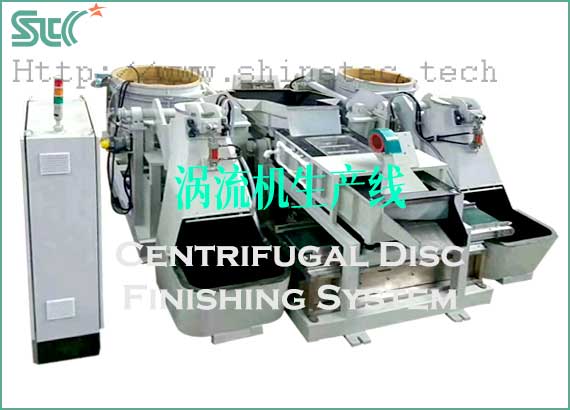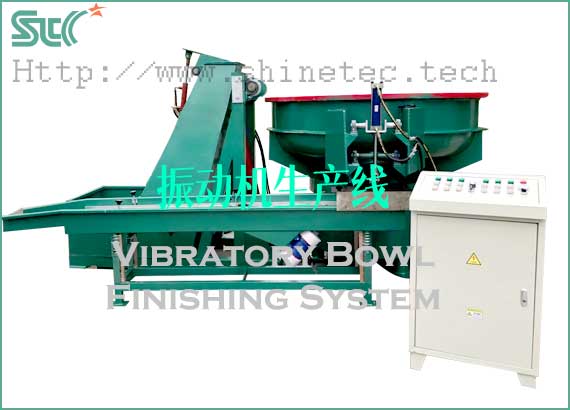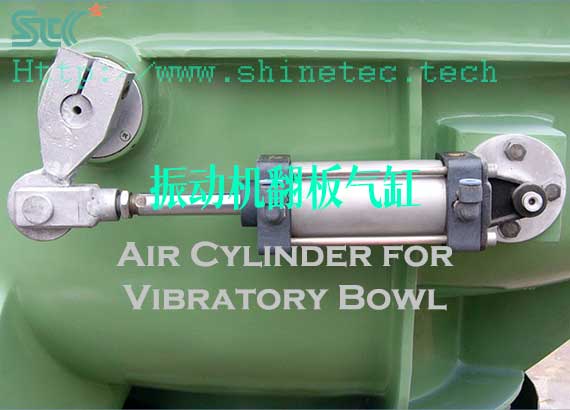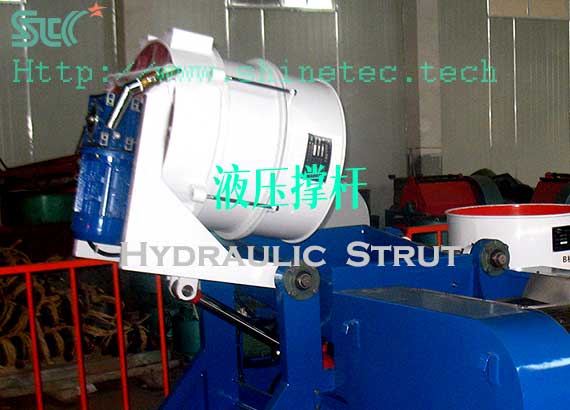How to polish the surface of engine connecting rod parts?
Do auto parts, engine parts, engine piston connecting rods need to be polished? The answer is yes. Engine connecting rods on the market are made of various materials, including titanium alloy, stainless steel, cast iron, forged iron, aluminum alloy or zinc alloy. During the machining process, quality problems such as burrs, flash, cracks, tool lines, rust, and scale will inevitably occur on the surface. In order to improve the surface quality and service life of connecting rods, ShineTec does our best to provide you with the best deburring, descaling, finishing and polishing processes, methods, collections and solutions for your products. The special finishing and polishing machines, equipment and tools produced by us can solve various problems you encounter in connecting rod polishing, which can be called the connecting rods polisher.
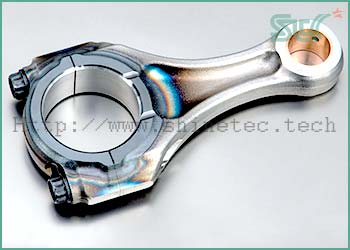
Finishing and polishing of titanium alloy engine connecting rod parts
Titanium alloy connecting rods are used in the engines of many sports vehicles due to their high strength and excellent performance. Light weight but high durability are the outstanding advantages of titanium connecting rods.
This kind of engine parts generally uses a vibrating finishing and polishing machine to perform polishing processes such as deburring, descaling, deflashing, chamfering, and brightening. The main polishing process is divided into two processes: rough finishing and fine finishing.
Rough finishing uses high cutting strength ceramic tumbling media combined with chemical finishing liquid, and fine finishing uses high density stainless steel media combined with acidic chemical polishing liquid to improve the surface brightness of the product.
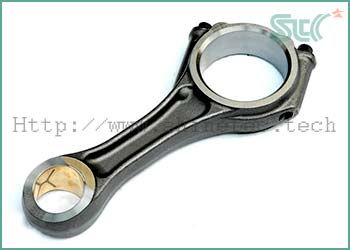
Finishing and polishing of cast iron engine connecting rod parts
Engine connecting rods made of cast iron are weaker than those made of stainless steel. Generally, low carbon steel is used for production. The main advantage of this product is the low material cost.
A Vibratory Finishing Machines is also used for rough finishing and fine polishing. For coarse finishing, ceramic tumbling media and finishing liquid are used to remove burrs, oxide scales, and flash edges. For fine polishing, stainless steel polishing media and acidic polishing liquid are used to brighten the surface.
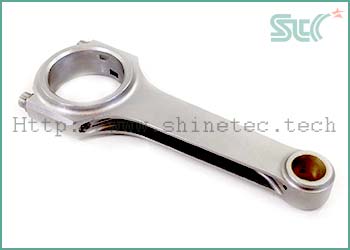
Finishing and polishing of machined engine piston connecting rod parts
Machined connecting rods can be made from different materials of metal or alloys. This kind of connecting rod will bear high pressure in the engine, so good finishing and polishing of the product surface can repair some surface defects such as cracks, pits, burrs, flashes, etc. to ensure that the connecting rod will not break under pressure.
A vibratory polishing machine can be used for polishing. If the volume and quantity of workpieces are small, a Centrifugal Barrel Finishing Machine can also be used. Different metal or alloy materials require different finishing and polishing abrasive media.
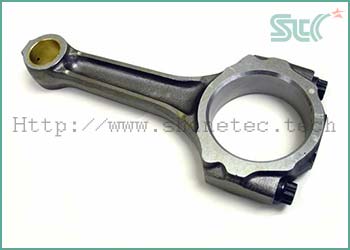
Finishing and polishing of forged engine piston connecting rod parts
Forged connecting rods are stronger than cast iron connecting rods. The surface of the forged connecting rod is definitely rough and not smooth, so the finishing process of deburring and descaling is necessary.
Universal vibratory finishing and polishing machines can be used for surface finishing and polishing. If you pursue short time and high efficiency, you can also use a centrifugal barrel finishing machine. It’s just that the purchase cost of the machine is higher than that of the vibration machine.
The abrasive media need to be matched according to the material and the shape and size of the workpiece.
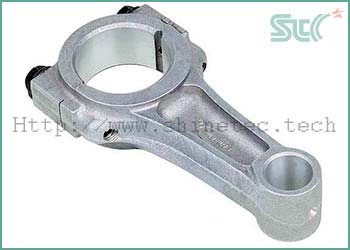
Finishing and polishing of aluminum alloy engine piston connecting rod parts
There are many benefits to using aluminum alloy or zinc alloy connecting rods compared to cast or forged connecting rods. Although its strength is not as strong as connecting rods made of other materials, this connecting rod can improve shock absorption performance and help reduce stress damage to the engine crankshaft.
Vibrating finishing machines or centrifugal barrel finishing machines can be used to debur, descale and deflash. Tumbling media, there is no doubt that Resin Media(Polyester/Plastic Media)must be used,For polishing brightness, Porcelain Media, High Density Porcelain Media, orStainless Steel Media can be used.
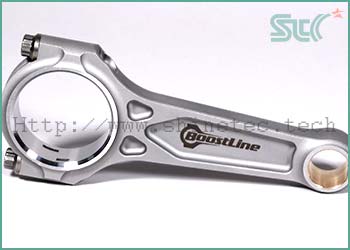
Finishing and polishing of supercharged engine piston connecting rod parts
This type of connecting rod needs to have strong fatigue resistance. Can be produced in different metals or alloys.
A slight defect on the surface of the product may lead to substandard quality, so finishing and polishing is a necessary process. We also recommend using a vibratory finishing and polishing machine.
- 1. What part of the engine is the connecting rod?
- 2. What is the function of finishing and polishing engine connecting rods?
- 3. Can you explain how traditional engine connecting rods are polished?
- 4. How is ShineTec’s engine connecting rod polishing machine polished?
- 5. What are the benefits of using ShineTec’s finishing and polishing machine to polish engine connecting rods?
- 6. Can you explain the differences between polishing by different finishing machines?
- 7. Are there any differences in finishing and polishing between the different abrasive media provided by ShineTec?
- 8. Are there any engine connecting rods that can be polished using ShineTec’s polishing machine?
- 1. What part of the engine is the connecting rod?
- The piston connecting rod belongs to the category of automotive parts and is an essential accessory for an engine. It is installed between the piston and the engine crankshaft. Also called connecting rod assembly. It is responsible for converting the linear motion of the piston into the rotational motion of the crankshaft.
- 2. What is the function of finishing and polishing engine connecting rods?
- Polishing your engine connecting rods has many benefits:
2.1 Fine finishing and beautiful surface.
The correct polishing process can give the connecting rod a beautiful surface treatment.
2.2 Improves the durability of connecting rods.
Finishing and polishing can remove burrs and scale from the surface of the connecting rod, which are key quality defects that affect the life of the connecting rod. Therefore, removing these imperfect surface defects through finishing and polishing methods can greatly improve the durability of the connecting rod. - 3. Can you explain how traditional engine connecting rods are polished?
- The traditional way of polishing connecting rods is manual. It requires a lot of labor and is an annoying process.
They all use a polishing wheel. Polishing heads of different sizes can be installed on this polishing wheel. According to the different connecting rods, different polishing heads can be replaced for operation. It is also necessary to use polishing paste to speed up the polishing process and make the surface of the connecting rod shiny. - 4. How is ShineTec’s engine connecting rod polishing machine polished?
- Generally speaking, it is divided into two processes. The first is rough finishing, deburring and descaling. Just put your connecting rod blank and tumbling abrasive media into the machine, and then add an appropriate amount of finishing liquid and clean water. After the rough finishing process is completed, the connecting rod can be taken out and transferred to the fine polishing process, which uses polishing to improve the gloss and brightness of the product surface. Just put the connecting rod and the porcelain abrasive media for fine polishing into the machine, add an appropriate amount of polishing chemical liquid and water, and start the machine. The entire polishing process is fully automatic, and you can get a shiny finished connecting rod after the polishing is completed.
- 5. What are the benefits of using ShineTec’s finishing and polishing machine to polish engine connecting rods?
- The benefits are many:
5.1 Excellent surface quality. The traditional manual polishing method depends on the skills and skilled procedures mastered by the workers. The finished products polished by each worker will result in different surface polishing quality, and it is difficult to achieve consistent surface quality of the finished products.
Polishing with our ShineTec finishing machines can avoid these problems and achieve consistent surface polishing quality.
5.2 Save man-hours. Polishing each piece by hand requires many man-hours. A worker can only handle one piece of connecting rod at a time. Using ShineTec’s engine connecting rod deburring and descaling solutions, large batches can be processed fully automatically at one time. The operating hours are greatly reduced.
5.3 low cost. Finishing and polishing mainly consist of two costs. One is the purchase cost of machinery and equipment, and the other is the labor cost of polishing. Manual polishing requires a large number of workers, but using our ShineTec professional finishing machine to polish large quantities of connecting rods only requires one operator. The one-time setup cost of the equipment will be higher than manual polishing tools such as polishing wheels, but it can be used for a long time. The tumbling ceramic media can generally be used for several months or even years after purchase. They are not more expensive than grinding wheels and polishing heads. The key is This saves a lot of labor costs, and overall, the cost of polishing will be greatly reduced.
5.4 No specially trained polishing operators are required. Hand polishing requires extensive training of operators upfront. Using our mechanized high-volume automated finishing and polishing solutions is simple and requires no dedicated employee training.
5.5 Not a labor-intensive polishing process. Traditional manual polishing is a typical labor-intensive process and requires a lot of labor. The polishing process of engine piston and connecting rod parts provided by ShineTec is completely mechanized. Only one worker is required to control the machine’s switch, which greatly reduces the use of labor.
5.6 Non-destructive surface polishing process. The quality of hand polishing depends on the skill of the polisher. Because manpower is uncontrollable, sometimes the polishing process may inevitably cause damage to the product surface. Using ShineTec’s finishing and polishing process, as long as the correct process flow and tumbling ceramic media are determined through process samples in the early stage, the final product of the engine connecting rod will have a uniform surface quality.
5.7 Extremely low maintenance costs.
When determining the polishing process for engine connecting rod accessories, routine maintenance costs are also an important factor that should be considered. ShineTec’s deburring and polishing machines are easy to use and operate and do not require additional special tools or trained operators. Therefore, daily maintenance costs are extremely low.
5.8 Large batch processing. ShineTec’s engine connecting rod polishing machine has the capability of mechanized processing of large batches at one time. It can not only polish the same products in batches, but also deburr and polish connecting rods with different shapes and sizes in the same batch. It can be called an engine connecting rod polisher. - 6. Can you explain the differences between polishing by different finishing machines?
- ShineTec’s finishing and polishing machines mainly have three common types that can be used for professional polishing of engine connecting rods. It can meet the needs of deburring, descaling, degreasing, deflashing, polishing and brightening.
6.1 Vibratory Finishing Machine。 The vibrating finishing machine is the most commonly used machine for polishing engine connecting rod parts. This model is the easiest to use and operate. The high-strength and elastomer PU lining of the working chamber can protect the connecting rod and tumbling ceramic media from hitting and cutting the inner wall iron plate. It is the most cost-effective and economical engine connecting rod polishing process solution. It can feed large quantities of connecting rods at one time and is suitable for polishing small and medium-sized engine connecting rods.
6.2 Rectangular Tub Finishing Machine。 Vibratory rectangular tub polishers can be used to polish long wishbones and crossmember links. The rectangular working chamber can be divided into several independent spaces with partitions, so that each connecting rod can be polished in a separate space without collision damage.
6.3 Centrifugal Barrel Finishing Machine. The centrifugal barrel finisher relies on centrifugal force to drive the working barrel for polishing. It is mainly used to clean and polish connecting rods during the fine polishing stage. The polishing efficiency of this model is very high, and it can produce a mirror-like polishing effect on the surface of the connecting rod within half an hour. Centrifugal barrel finishing machines are divided into two types according to different loading and unloading methods. One is that the barrel has a relatively large capacity and cannot be removed. There is a sealing cover on the barrel, and loading and unloading tumbling media go directly through the opening of the barrel. The other is that the working barrel has a small capacity and can be taken out of the machine. The loading and unloading tumbling media are in the machine. Performed externally, suitable for smaller sized connecting rod polishing. - 7. Are there any differences in finishing and polishing between the different abrasive media provided by ShineTec?
- The abrasive media used to remove burrs, scale and flash from engine connecting rods are also called ceramic tumbling media or polishing media. Each abrasive media corresponds to a different polishing process. Ceramic deburring media are generally used for deburring, deflashing, and descaling. Stainless steel media or polishing porcelain media and high-density porcelain media are generally used to improve brightness. For different shapes and sizes of connecting rods, each tumbling media has different shapes and sizes to choose from.
7.1 Ceramic Deburring Media. Deburring media is made by mixing brown corundum sand with cutting force with clay, alumina powder, etc., and then sintering it in a high-temperature kiln after shaping. According to the different particle sizes of brown corundum sand, it is divided into heavy cutting, medium cutting and light cutting types, which are suitable for different materials. To measure the quality of a deburring media, there are several indicators such as cutting force, wear resistance, dimensional consistency, hardness, and color difference. The ceramic media produced by ShineTec all use the best first-grade brown corundum new sand, clay raw materials from major manufacturers in the industry, strict molding production processes, and proper sintering temperature control. The above indicators of the tumbling ceramic media are all Ahead of domestic peers. Especially in the key indicator of wear resistance, it is far ahead of competing products. The use time can be extended by 2-3 times, which can save a lot of consumable costs for the manufacturers.
7.2 Resin Media. Also called plastic media, polyester media, it is obtained by mixing brown corundum sand with resin and curing it. There are also three different finishing levels, heavy cutting, medium cutting, and light cutting. Commonly used shapes include cone, triangle, tetrahedron, and bullet shape. This kind of tumbling finishing media is suitable for polishing soft parts made of aluminum alloy, zinc alloy, copper and other materials.
7.3 Porcelain Media. This kind of tumbling abrasive media is mainly made of sintered kaolin and alumina powder. It does not contain brown corundum sand and has no cutting force. Therefore, it is mainly used to polish the surface brightness. That is the last fine finishing and polishing process. The quality of the product is mainly determined by the alumina powder content, which ranges from 30% to 70%. The higher the content, the greater the density and specific gravity, and the higher the gloss and brightness of the polished product surface. Of course, sintering temperature is also a key factor affecting quality. Like brown corundum abrasives, tumbling porcelain media have various shapes, including sphere, triangle, oblique triangle, right cylinder, oblique cylinder, three-star, oblique three-star, ellipse, etc., and the specifications and sizes also vary widely.
7.4 Stainless Steel Media. Since the specific density of stainless steel can reach 7.8 grams/cubic centimeter, which is three times that of porcelain media, the surface of the polished product has the highest density and the highest brightness. Suitable for surface polishing of hard metals. Not suitable for soft metal workpieces such as aluminum alloys and copper. This polishing media has virtually no wear and can be used continuously for decades. The stainless steel media shapes include ball, ballcone, ufo, and pins shapes, and the materials include AISI201, AISI304, AISI316, AISI420, and AISI440C, which are suitable for different acidic or perishable environments.
7.5 Walnut Shells or Corncob Media. Walnut shell or corncob media is a biodegradable vegetable abrasive. It is mainly used for the drying process after polishing the engine connecting rods. This tumbling abrasive media also comes in different sizes depending on the particle size. In addition to absorbing water and drying, it also has the ability to adsorb impurities and dust on the surface of the connecting rod to the abrasive, playing a cleaning role. It is a dust-free cleaning process. - 8. Are there any engine connecting rods that can be polished using ShineTec’s polishing machine?
- ShineTec’s mass finishing machines are suitable for almost all types of engine connecting rods on the market.
8.1 Titanium alloy connecting rod. Titanium alloy connecting rods are high-end products on the market because of their strength and durability. Its performance is unmatched by other connecting rod products. A vibratory finishing machine can be used for cleaning and polishing.
8.2 Cast iron connecting rod. Because it is mainly produced from low carbon steel, its strength is lower than that of stainless steel connecting rods. Due to its low production cost, it is the most widely used connecting rod product on the market. Vibratory finishing machines can be used for finishing and polishing.
8.3 Machined connecting rods. The material can be produced from different metals, depending on the type of engine used. The most suitable machine is a centrifugal barrel finishing machine, which can quickly remove tool lines, burrs, and scale. A vibrating finisher can also be used.
8.4 Supercharged engine engine connecting rods. Because it is used in high fatigue strength environments, high-strength materials will be used to produce this connecting rod. Generally used in high-horsepower heavy-duty engines. Proper polishing process can repair surface defects and extend the service life of connecting rods. Suitable for polishing using a centrifugal barrel finishing machine.
8.5 Forged engine connecting rods. Compared with cast iron connecting rods, forged connecting rods have higher durability. The tighter metal crystal structure formed inside the forged parts ensures higher strength of the product. But forged connecting rods have more surface imperfections. Vibratory or centrifugal barrel finishing machines can be used to polish this product.
8.6 Aluminum alloy connecting rod. Aluminum alloy connecting rods have better shock absorption performance. It can reduce the stress on the engine crankshaft and extend its service life. Because it is a soft metal, the tumbling finishing media used for deburring, descaling must be a resin tumbling media. The mass finishing machine can be a vibratory finishing machine or a centrifugal barrel finishing machine.
